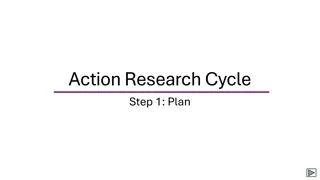Intro to Outcome Measurement in Clinical Practice & Research
Learn key terminologies, assessment, examination, evaluation, and measurement in clinical practice. Understand patient management models for optimal outcomes in physical therapy. Explore data collection and interpretation methods for clinical decision making.
Download Presentation
Please find below an Image/Link to download the presentation.
The content on the website is provided AS IS for your information and personal use only. It may not be sold, licensed, or shared on other websites without obtaining consent from the author. Download presentation by click this link. If you encounter any issues during the download, it is possible that the publisher has removed the file from their server.
Presentation Transcript
Introduction to Outcome Measurement in Clinical Practice and Research Mohammed TA, Omar Rehabilitation Health Science Department CAMS-KSU Momarar@ksu.edu.sa Dr.taher_m@yahoo.com 0542115404
Lecture Outline Terminology related to outcome measures in clinical pr actice (e.g.Assessment , Examination Evaluation, & outcome measurements ).
Physical Therapist Patient/Client Management Model physical therapist integrates the five elements of patient/client management in a manner designed to optimize outcomes. The Examination, Outcome Evaluation, (The Interactive Guide to Physical Therapist Practice with Catalog of Tests and Measures (2002) Intervention Diagnosis, Prognosis,
Assessment Assessment is the overall process of selecting and using multiple data-collection tools and various sources of information Outcome measurements It involves interpreting information collected to make clinical decisions (analysis and synthesis) related to the needs of the person and the appropriat eness & nature of their therapy. Evaluation Examination Assessment
Examination Comprehensive screening and specific testing process leading to identifying potential and existing movement-related disorders, diag nostic classification and/or, as appropriate, to a referral to another practitioner Component of examination History Systems review Tests & measures
Evaluation Evaluation is a component of assessment process Evaluation is based on the data gathered from the examination(e.g. history, systems review, and tests and measures) and synthesizes all of these findings to establish the diagnosis, prognosis, and plan of care. Evaluation involves the collection of data to enable the therapist to make a judgment about the amount of a specific construct of interest
Measurement measurement A measurement is the data obtained by measuring. A measurement is obtained by applying a standard scale/tools/equipment to variables, thus trans lating direct observations or client/proxy reports to a numerical scoring system.
Health Outcome Measurements A health outcome is a chan ge in the health of an indivi dual, or a group of people o r population, which is wholl y or partially attributable to an intervention or series of i nterventions. (AHMAC Febr uary 1993; Modified by NHI MG 1996) Health Outcomes Framework
Outcome measurement Outcome measurement is a process undertaken to establish the effects of an intervention on an individual or the effectiveness of a service on a defined aspect of the health or well-being of a specified population
OUTCOMES Outcomes Assessment Collection and recording of information relative to health processes Outcomes Management Using information in a way that enhances patient care
Primary versus Secondary OM Outcomes Primary Secondary Variable providing the most relevant and convincing evidence related to the main objective of the research. Supportive measurements of the primary objective or measurements of effects related to other secondary objectives.
Generic versus Specific OMs Generic Diseases-specific Purpose Assess overall health status across a broad spectrum of norms /and or diseases Gather information about the impact of a specific health condition Population General population Used for patients with a specific health (healthy and non-healthy) Applicable across individuals with differing con dition health conditions Benefit Allow comparison to normative populations More sensitive & provides insight into the relationships among body function/structure impairments, activity limitations, and participation Limitation Ceiling and floor effects more likely Does not allow comparisons across different groups of patients Example Functional Independence Measure Clinical indicators and physiological measures Patient-reported disease specific measures
Performance-Based Measures versus Self-report OMs Performance based Self report Purpose Assess actual performance in a particular enviro nment at a specific point in time Collect information on patients opinions/perceptions of the impact of the health condition Determine current level of function Timing, distance, force , power , strength, Observation of performance Rating level of independence/difficulty Allows observation of task performance Less likely to have missing data Data collection Methods Interview Questionnaire Benefit Can assess constructs not observed during performan ce (e.g., fear of falling) Can assess activities not observed clinically Cognitive and communication ability Language and educational level Patient may miss or misinterpret items or over-/underestimate ability 36-short form health questionnaire Seattle Angina Questionnaire (SAQ) Child Health Questionnaire (CHQ) Limitation Equipment required, environmental factors, fati gue, motivation, and learning effects, measure i naccuracy Example Functional Independence Measure , Gross moto r function measure 10-meter walking test, Time up and go test
Patient-reported outcomes (PROs) A PRO is any report of the status of a patient s health condition that comes directly from the patient, without interpretation of the patient s response by a clinician or anyone else. (Food and Drug Administration, 2009) Health- Patient satisfaction and perception Physical functioning Signs and symptoms Treatment adherence related Quality of Life (HRQoL) Applied ======Prior to, during and after their treatment Using =========standardized and validated questionnaires
Health, Health Status, Quality of life (QoL), Health realted quality of life(HRQoL)
Health Health is an individual's level of function , where optimum function is judged in comparison to society's st andards of physical and mental well-b eing . Health A state of complete physical, mental and social well-b eing, and not merely the absence of disease or injury (WHO, 1981).
Quality of life (QoL) QoL An individual s perception of his /her position in life in the context of the culture and value systems in which he/she lives, and in relation to his/her goals, expectations, standards and concerns. QOL is the general well-being of individuals and societies, outlining ne gative and positive features of life spiritual or existential well-being; and other characteristics valued by humans. health; social well-being; economic well-being; life satisfaction;
What is health-related quality of life? HRQoL can be defined as how well a person functions in their life and his or her perceived wellbeing in physical, mental, and social domains of health HRQoL Its part of a person s overall quality of life that represents the functional effect of an illness and its consequent therapy upon a patient, as perceived by the patient . On the individual level Includes physical and mental health perceptions correlating with health ri sks and conditions, functional status, social support, and socioeconomic status At the community level Community-level resources, conditions, policies, and practices that influe nce a population s health perceptions and functional status
Health related Quality of Life HRQoL can be defined as how well a person functions in their life and his or her perceived wellbeing in physical, mental, and social domains of health Social and role function Health-related Quality of Life Encompasses several aspects of heal th that are directly experienced by the person including physical functioning, Mental and general health Perception Physical function

















































